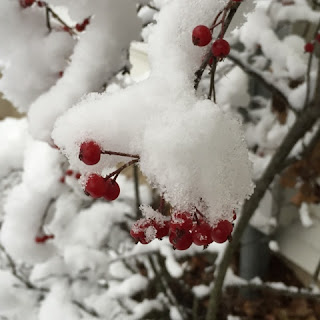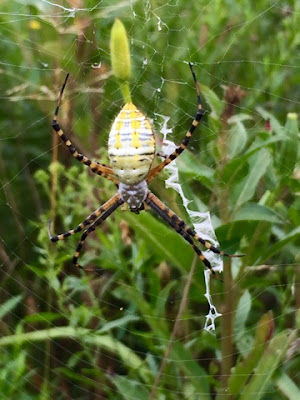I know... I have been terribly remiss this summer at posting. No excuse other than inertia, or lack thereof. (And a foot injury limiting my walking, but really? I don't need to leave my yard to photograph most of this stuff.) We missed the prairie clover and blazing star, ironweed and a whole host of yellow composites that are coloring the prairie. We missed the grasses starting to earn their late summer dominance. We'll get to some of that, I assume... But I noticed this trailside sight last night, and couldn't resist taking a few photos, so I figured I'd share!
It's been about a week -- maybe a few more days than that -- since the loud, insistent hum of cicadas has become the background noise for the late summer afternoons and evenings. These, I think, are a phenological harbinger to me. When does summer become late summer? It's the cicadas that make it feel like summer is waning. Well, the cicadas and the yellow, I suppose. The prairie has so much yellow, and the light just gets a yellower quality to it that I can't quite quantify, but I feel it. It's funny, because technically, astronomically, we're not even half way through the interval between summer solstice and the autumnal equinox. And yet.
Despite the heat, despite the fact that school doesn't start for a little while yet, this part of summer has such a different flavor than the earliest and middle parts. Ah well, enough of that! Instead, time for some interesting cicada information. Anyone familiar with cicadas knows that while they're quite large insects, they also seem pretty clumsy and slow. So how does such a plump tasty treat avoid being bird prey? It turns out their mating call is also a defense! Only make cicadas make noise; they do it to attract a mate. Their instruments are tiny but powerful -- over 120 decibels. This is loud enough to be painful to humans... and to birds. The noise of a group of calling cicadas is both unpleasant to birds and also disrupts their own communications. This makes it hard for them to pick off the delicious (I'm assuming, to a bird) insects!
Now we've all learned something, we can get on with our day!


















































